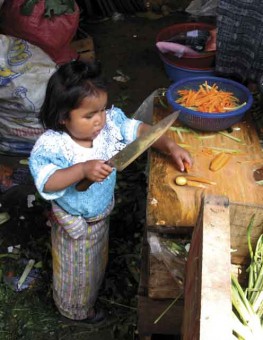Culture Unshocked
Written by Ana Flinder
Culture shock is a strange phenomenon which most of us have experienced in one way or another. For those of us who travel outside of our own countries infrequently, arrival in a new and foreign culture can be absolutely overwhelming; every moment is filled with so many new sights and sounds, and new customs that we must adjust to, that we only begin to notice specific differences and become able to differentiate and articulate them gradually.
On the other hand, those of us who have lived as residents in foreign countries for long periods of time get so accustomed to the cultural differences of our adopted countries that we hardly even notice them, and when we return to visit our “country of origin” we experience more culture shock than we did when we arrived in a foreign country.
It is tempting, and often subconscious at first, to make value judgments about the cultural differences we experience, and to judge things rather harshly as right or wrong, or simply in terms of what we like and don’t like—but with a strong emotional edge. Many people actually travel frequently and are still constantly buffeted about by their own emotional judgments of what they see.
Personally, I strive to remind myself to ask myself whether something which I simply don’t like is or is not morally wrong, according to my values. Usually the answer is no. More importantly, I remind myself to observe impartially, to continue to observe, and to try to find the humor in the situation. Fortunately, this turns out to be extremely easy in the majority of instances.
Not long ago I was taking an evening stroll down Calle Santander, the main tourist street of Panajachel. As I passed by a string of locally run restaurants and tiendas, I saw a little Guatemalan girl, about 2 years old, alone in front of her family’s shop, off the sidewalk, in the street, playing with a little pile of broken glass.
Having recently returned from a trip to the U.S., I could easily imagine that if that scene had taken place in my country, her mother would soon come out of the shop to find her girl playing with broken glass, and with great drama, whisk the girl away in a freak-out, and tell her adamantly and theatrically how dangerous it was—“Don’t play with that!! You’ll hurt yourself !!” And of course, the girl would be startled to tears. But I have seen both the freedom and the good sense of even the smallest of children here—the coconut seller’s 4-year-old son practicing dehusking coconuts with a machete, the gangs of little boys setting off firecrackers under their own noses with no adult supervision, the children high up in flimsy limbed trees whose branches somehow magically support their weight. So I simply sat on the opposite sidewalk to see what would happen next.
There was no drama, no scolding, no violent dragging the girl away from the danger—no parental “Oh my God, get away from that!!” Instead, the girl’s father came out of the store, saw her playing with broken glass, calmly took he hand and led her inside. Moments later they both returned, he with a dustpan, she toddling along with a broom bigger than she was. Her father showed her how to use a broom as he held the dustpan, then he finished the job himself and they both went inside, holding hands, to put the broken glass in the garbage. No drama, no fuss. No big deal. Job well done, simple as that.
OK, I must admit, I make a value judgment: I like this way of responding better than the drama and complexity that would have ensued in such a simple situation in my country. Not only that, but I do believe that the response I witnessed was much more healthy for all involved, especially the little girl. But, yes, it also made me shake my head with a chuckle.
